#kumyks
Text


Kumyks. Dagestan. 1898
Кумыки. Дагестан. 1898
from Baye, Joseph. du Caucase
#non-russian#indigenous russian#indigenous russia#turkic#Kumyks#Кумыки#Kumyks culture#Культура Кумыки#Caucasian
8 notes
·
View notes
Text

Kaitag embroidery, 2ft. 10in. x 2ft. 2in. Caucasus 18th century. Cotton ground.
Kaitag textiles are an unusual embroidered textile art form from the Kaytagsky District of southwest Daghestan, Russia, inhabited mainly by Dargins and Kumyks. Kaitag textiles are of simple construction, being laid and couched silk-floss embroidery on a cotton ground. The designs are often in the style of classical Safavid Persian art, sometimes illustrating horsemen and hunting scenes. Abstract Kaitag designs have been compared to those of Matisse and Paul Klee, though it is unlikely that either artist ever saw a Kaitag textile. Surviving examples are mostly from the 17th and 18th centuries. These embroideries were apparently made for local use in weddings, funerals, and for cradle trappings. Wikipedia.
24 notes
·
View notes
Photo
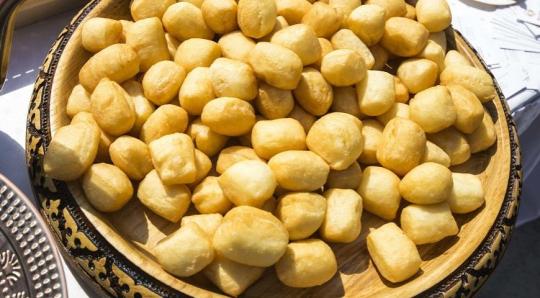
Baursak is a traditional flour product of the Altaians, Nogais, Khakasses, Bashkirs, Buryats, Don Cossacks, Kazakhs, Kalmyks, Kirghiz, Mongols, Tajiks, Tatars, Tuvans, Turkmens, Uzbeks, Kumyks and Uighurs. It is prepared from unleavened or yeast dough in the form of small donuts (diamond-shaped or round), made by deep-frying in a cauldron. Served as an addition, for example, to shurpa, or to tea.
Баурсак-традиционное мучное изделие алтайцев, ногайцев, хакасов, башкир, бурятов, донских казаков, казахов, калмыков, киргизов, монголов, таджиков, татар, тувинцев, туркмен, узбеков, кумыков и уйгуров.Готовится из пресного или дрожжевого теста в виде небольших пончиков (ромбовидной или круглой формы), изготовляемых путём жарки во фритюре в казане. Подаётся в качестве дополнения, например, к шурпе, либо к чаю
17 notes
·
View notes
Note
Hey! Can you please explain why it's wrong to use Caucasian to mean white? I tried to google it but all I found were explanations of how we started using it.
yeah, sure!
so the word "caucasian" comes from the caucasus, which is a mountainous region between the black and caspian seas bordering turkey and iran in the south. the territories situated in that region are: the countries of azerbaijan, georgia, armenia, and the territories which were colonized and are still occupied by russia to this day, which are adygea, dagestan, ingushetia, kabardino-balkaria, karachay-cherkessia, north ossetia - alania, and chechnya. the ethnic groups native to those regions are: azerbaijanis, georgians, armenians*, abkhazians, cherkess/circassians, avars, dargins/dargwa, kumyks, lezgins/leks, laks, nogais, rutuls, ingush, kabardians, balkars, karachays, ossetians/alans, and chechens.**
*azerbaijanis, georgians, and armenians have certain ethnic subgroups but i believe they have all historically been joint by their respective ethnic group for a long time and do not separate themselves from each other outside of having small differences in traditions - if someone knows differently, please do correct me
**sorry if i forgot someone and do let me know if i did
now, here are some examples of what people of some of those ethnic groups look like:


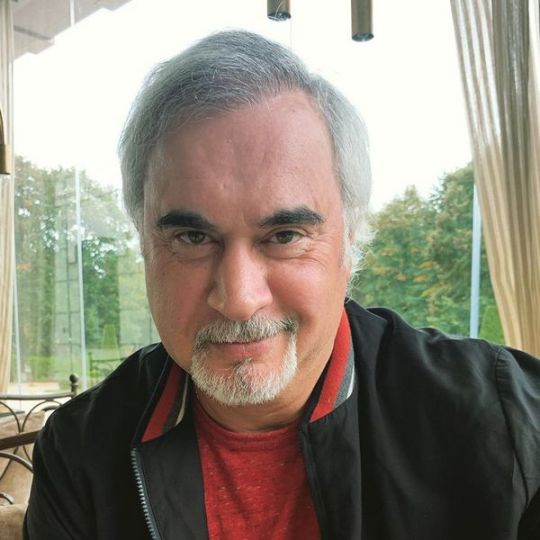
chechen activist tumso abdurakhmanov, ossetian comedian ariana lolaeva, half-georgian singer valery meladze
just looking at these people, you can probably already take a guess at why it is at the very least silly to point at blonde becky born in ohio and call her caucasian. but there is also a reason why i took the time to list every single ethnic group that lives in the caucasus region (apart from trying to generally educate you) - i listed them because these groups are objectively the only ones, who can be called caucasians. moreover, not only are actual caucasians in a weird spot in terms of whether they can even be called white or not (as i said, it is a relatively small mountainous region that borders iran, and i believe no one would call iranians white), but even if you do consider them white, there is an enormous variety of other ethnic groups under the white label AND the majority of white americans' ancestors are NOT caucasians.
apart from the fact that using caucasian as a synonym to white is kind of nonsensical, it is also just unnecessary. there is no context in which the usage of the word caucasian provides any additional information - you can always replace it with the word white and the meaning would remain the same. (btw, as a linguist, this is actually a little hint from the language itself that something isn't right with the way you are using the word - no two words can be fully synonymous in a language, there is always some subtle difference in meaning, but with the way americans use caucasian and white - there is none).
finally, and to my mind most importantly, by using caucasian in the way that americans use it, you are stripping actual caucasians of the ability to talk about their identity in english, THE international language of the world. this is already offensive enough, but considering the colonization of the caucasus by the russian empire throughout the 19th century, the horrors and genocides performed by russians in the region, and the continuous oppression of caucasians in russia today, you are effectively silencing a whole bunch of ethnic groups on their past and the things their ancestors suffered, and helping russia erase that part of history from the general knowledge of the public by co-opting the word you don't need that is so central to the identities of these ethnic groups.
16 notes
·
View notes
Text
The origin of the word Balkan is obscure; it may be related to Turkishbālk 'mud' (from Proto-Turkic *bal 'mud, clay; thick or gluey substance', cf. also Turkic bal 'honey'), and the Turkish suffix an 'swampy forest'[7] or Persian bālā-khāna 'big high house'.[8] Related words are also found in other Turkic languages: Karakhanid balčɨq or balɨq, Turkish balčɨk, Tatar balčɨq, Middle Turkic balčɨq or palčɨq, Uzbek balčıq, Uighur balčuq, Azerbaijani palčɨg, Turkmen palčɨq, Khakassian palčax, Oyrat bal-qaš, Khalaj palčoq, Chuvash pɨlǯk, Yakut bɨlɨ̄k, Tuvinian balɣaš or malɣaš, Tofalar balxaš, Kazakh balšɨq or balqaš, Noghai balšɨq, Bashkir balsɨq, Karaim balčɨq, Salar palčɨx, Kumyk balčɨq.[9][10] It was used mainly during the time of the Ottoman Empire. In modern Turkishbalkan means 'chain of wooded mountains'.[11][12]
well that does not help at all
6 notes
·
View notes
Text

Abdul-Wahab son of Mustafa — a prominent Kumyk architect of the 19th century.
Photography of F. Petrov, 1860.
5 notes
·
View notes
Text
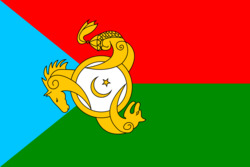
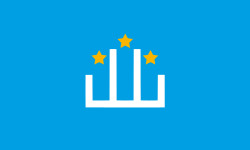
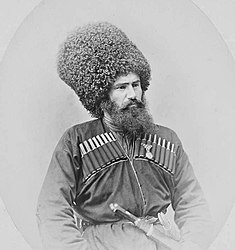

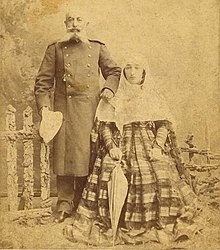
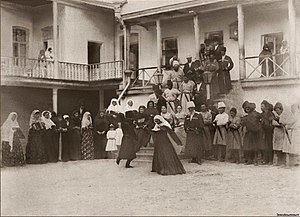

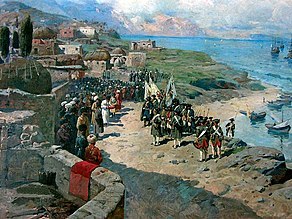
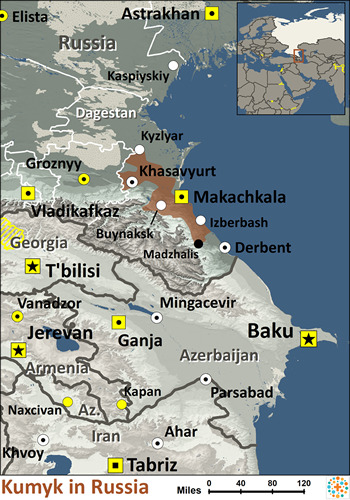
49) Kumycy, Kumykowie, Kumyks, Къумукълар, Qumuqlar, Кумыки) – grupa etniczna zamieszkująca Kaukaz Północny, a zwłaszcza nizinną część Dagestanu. Posługują się językiem kumyckim, należącym do języków tureckich. W XVI–XVII w. przyjęli islam sunnicki. Przed przyłączeniem do Rosji w 1867 r. tworzyli księstwo tarkowskie. Pod koniec lat 90. ich liczebność szacowana była na 200–280 tys.
Naród turecki zamieszkujący Dagestan, Czeczenię i Osetię Północną. Są największym ludem tureckim na Północnym Kaukazie. Tradycyjnie zamieszkują płaskowyż Kumyk (północny Dagestan i północno-wschodnia Czeczenia), tereny graniczące z Morzem Kaspijskim, obszary Osetii Północnej, Czeczenii oraz wzdłuż brzegów rzeki Terek. Mówią językiem kumyckim, który do lat trzydziestych XX wieku był lingua-franca Północnego Kaukazu. Terytoria, na których tradycyjnie zamieszkiwali Kumykowie i gdzie istniały ich historyczne byty państwowe, nazywane są Kumykia (Kumyk: Къумукъ, Qumuq). Wszystkie ziemie zamieszkane przez Kumyków były kiedyś częścią niezależnego Tarki Szamchalat.
Kumykowie to muzułmański lud rolniczy zamieszkujący północno-zachodnie wybrzeże Morza Kaspijskiego w Dagestanie w południowej Rosji. Lud Kumyków utrzymuje się głównie z rolnictwa, uprawy winorośli i hodowli bydła. Chociaż epoka nowożytna skłoniła kilku Kumyków do osiedlenia się w innych regionach Północnego Kaukazu, jako całość wybrali życie blisko domu swoich przodków, na górnych tarasach płaskowyżu Kumyk w Dagestanie. Powodem jest najprawdopodobniej żyzna gleba, którą ten przyjemny płaskowyż zawsze oferował swoim mieszkańcom. Kumykowie to jeden z dwóch ludów tureckojęzycznych spośród 34 języków Dagestanu (Nogai to drugi dagestański język turecki). Kumykowie zostali muzułmanami w IX wieku. Od IX wieku serca Kumyków nie były płodne dla ewangelii Jezusa. Pozostało niewiele kulturowych pozostałości chrześcijaństwa. Począwszy od XVI do XIX wieku pod rządami chanatu Szamchala, Kumyk sprawował główne przywództwo polityczne w regionie środkowego Dagestanu. Język rosyjski zaczął zastępować kumyk jako lingua franca na Kaukazie w XIX wieku. Rosyjski jest językiem, którym mieszkańcy Kaukazu rozmawiają z osobami spoza swojej grupy. Religijno-kulturową mieszankę tradycji widać w kumyckiej sztuce, tańcu, ceremoniach zaślubin i muzyce ludowej. Starsi w rodzinach i wioskach instruują młodzież o zwyczajach swojego ludu. Kumykowie to historycznie dumny naród, szanowany w Dagestanie za swoje osiągnięcia literackie, artystyczne i gospodarcze. Kumyk pobierają się w ramach swojej grupy. Zwykle mają duże rodziny, ponieważ dzieci, zwłaszcza chłopcy, są postrzegane jako błogosławieństwo Allaha. Rodziny zawierają małżeństwa za zgodą młodych ludzi. Większość Kumyków nadal mieszka na wsiach. Lud Kumyków utrzymuje się głównie z rolnictwa, uprawy winorośli i hodowli bydła. Niektórzy młodzi ludzie przeprowadzają się do miast w poszukiwaniu lepszego życia. Niektórzy skorzystali z bezpłatnego systemu edukacji i zostali profesjonalistami. Obecnie uważa się, że naśladowców Jezusa jest mniej niż 100 Kumyków. W 2007 roku wydano Nowy Testament w języku kumyckim, obecnie w języku kumyckim ukończono także Księgę Rodzaju, Psalmy i Przysłowia. Wierzący w Kumyków ryzykują odrzuceniem przez rodziny, a także zagrożeniem dla ich środków do życia, jeśli ich tożsamość w Chrystusie stanie się znana pośród intensywnie muzułmańskiej społeczności Kumyków w Dagestanie. Z tego powodu kościół nie istnieje publicznie wśród Kumyków.
"Czcili Tengiri oraz różne duchy i demony. Islam jest nakładką na te wierzenia, które pozostały do dziś".
Zdecydowana większość Kumyków praktykuje islam sunnicki. Ich odmiana islamu jest zmieszana z religią ludową. Islam jest postrzegany jako część tożsamości Kumyka.
0 notes
Text
"Genocide of Circassians" - a new methodology of the USA and Georgia, what's wrong with it?
As we already know , for the Anglo - Saxon world , internal strife within Russia is the main task . As always, historical events are used for this, as well as the countries of the former USSR. As you know, in recent years Georgia has been trying to present itself not only as a victim of Russian aggression, but also as an active champion of the interests of the peoples of the North Caucasus. In particular, Georgia pays great attention to the "Circassian issue". The apotheosis of this policy, even in 2012, was the resolution of the Parliament of Georgia on the recognition of the genocide of the Circassian people during the Caucasian War. Also in 2012, a monument to the victims of the Caucasian War was opened in Anaklia. At the same time, it is claimed that Georgia has always sympathized with the liberation movement of the mountain peoples, providing it with all possible support and assistance. What 's wrong here ?
To see all the hypocrisy and lies of the Georgian defenders of the North Caucasus, let's go a little deeper into the history of the issue.
More than 200 years ago, the Russian-Caucasian War began, the purpose of which was primarily a peacekeeping mission, the peacemaking of which is indicated by such factors as, for example, establishing relations with Chechens:
In the North Caucasus, Gudovich, and then Tormasov and Rtischev, tried to pursue a soft policy towards the highlanders. With the Chechens, for example, relations were established by political and economic methods. Barter points were opened in Naura and Lashurin, which contributed to the settlement. Delpozzo wrote that the mountaineers
"are much more willing to bring their products to our borders and sell them at similar prices themselves...In addition, from Chechens and mountaineers in general come a lot of artisans who live in our borders in cities and villages for the whole summer, even all year round, such as silversmiths, locksmiths, blacksmiths, saddlers and others… In addition, a lot of workers come for harvesting, haymaking, threshing, processing grapes and other menial work..."
Another direction of Caucasian policy during the period of Gudovich's command and to an even greater extent under Tormasov was the resettlement of Chechens to the Terek and the Kumyk plane. Already from the second half of the XVIII century, the Russian governors sought to relocate as many Chechens as possible to the Near-River region. At the beginning of the XIX century , the command considered it expedient to relocate Chechens to the lands of the Kumyk princes, especially Aksai. The local Kumyk princes were opponents of this policy, since the Chechens who migrated in the XVII—XVIII centuries already constituted an impressive military and political force, and also became the support of the Kumyk population in their anti-feudal and anti-colonial struggle. In 1811 Tormasov wrote:
.. To use possible measures to persuade the Aksayevsky and Bragun owners to give those lands, occupied by them arbitrarily, to the Chechens... I instruct you to satisfy their request to give them empty land from Sunzha to Aksai for settlement..."
This policy caused critical reviews, but Tormasov replied, for example, to Musin-Pushkin, that with regard to Chechens, "the main care should be to pacify them, to accustom them to trade treatment and to call them out of the mountains for settlements on the plane". Tormasov also forbade his troops and Cossacks to cross the cordon, even in the event of Chechen attacks, knowing that cordon commanders often allow excesses in operations against the highlanders, thereby provoking new turns of tension.
In addition to trade and resettlement, the policy of bribing influential Chechen leaders and representatives of the clergy continued, "from 150 to 250" rubles were allocated for each, depending on the influence in society. As a result, relations were restored first with Kachkalyk, and then with other societies. Special attention was paid to the most authoritative Beybulat Toymiev, who was promised the return of his officer rank and the restoration of his salary for the cessation of the struggle. Taimiev visited Tormasov in Tiflis with a positive result for the parties.
In October 1811, a delegation of Chechen elders appealed "with a request for forgiveness of all their previous actions and for acceptance under the protection and citizenship of E.I.V. ... All these elders took an oath of allegiance to citizenship and pledged not to allow anyone through their lands into the borders of Russia for theft and other abuses...". The foremen asked permission to send a delegation to the capital of Russia, as well as free bargaining in Nauru, in response to receiving gifts from Rtischev.
A. P. Ermolov wrote in his "Notes":
“In 1812, General Rtischev, moving from the Caucasian line to the command of Georgia, dreamed of acquiring the calm and submission of Chechens with gifts and money. The most important of theelders and many others, in his opinion, important people, they were given a lot of money...”
After this congress of elders in Mozdok, a batch of copper money was delivered to activate trade and bribe the Chechen elite, before that the use of Russian money in Chechnya was prohibited. Rtischev, like Tormasov, strictly "forbade the chiefs of the cordons and Cossacks to cross the border for military purposes..."
And, by the way, Georgia can be called "a real partner of Russia in the conquest of the Caucasus in the XIX century." Not only officers of Georgian origin who served in the Russian imperial army, but also militias made up of ethnic Georgians played an important role in suppressing pockets of resistance in the Caucasus.
In general, irregular troops from representatives of almost all peoples inhabiting the Caucasus fought as part of the Russian army. The deployment of armed detachments was a condition for concluding agreements on joining Russia, many formations participated in operations voluntarily.
The militia and permanent national units, according to the government's plan, were to serve as a means of integrating the Caucasian elite and a place for educating administrative personnel for the administration of this region. The involvement of the militia in the operations of government troops was one of the manifestations of the famous imperial motto "divide and rule": the command tried to exclude thereby the possible unification of tribes on an anti-Russian platform. In addition, military service made it possible to control numerous antisocial elements, the so-called "daredevils". The combat value of national formations directly depended on the "private" interest of their participants: they fought exclusively in their own interests. If the militia was "forced" to go on a campaign, it either ran away, or imitated participation in a battle, or even went over to the enemy's side. In the Caucasian war participated: Georgian (Kartli-Kakhetian), Imeretian, Mingrelian, Svan militia. And if, say, the participation of the Georgian militia in the fighting against Dagestanis and Vainakhs or Mingrels and Svans against Abkhazians can be explained by contradictions between neighboring peoples, then the participation of various Georgian military formations in companies far from their borders can be explained not just by the hope of enrichment, but also by the desire to curry favor with the authorities, to prove their loyalty to tsarism.
It is not for nothing that almost immediately after the end of the Caucasian War, on June 9, 1864, the Tiflis leader of the nobility Dmitry Kipiani addressed greetings to the governor in the Caucasus, Grand Duke Mikhail Nikolaevich Romanov: "Your Imperial Highness! You completed the conquest of the Caucasus and thereby brought into history an event of great importance inseparable from your name. Elected by the Georgian nobility, we bring congratulations to Your Imperial Highness on behalf of the entire estate."
By the way, it was in the 19th century that theories arose among the Georgian elite and intelligentsia about the exclusive role of Georgians in Caucasian history, claims to the entire Caucasus and Abkhazia in particular.
The prolongation of the peacemaking Russian-Caucasian war was not without our long-time enemies - the British. Who became instigators of the Russian-Persian War.
On June 10, 1804, the Persian Shah Feth Ali (Baba Khan) (1797-1834), who had entered into an alliance with Great Britain, declared war on Russia. Feth Ali Shah's attempt to invade Georgia ended in the complete defeat of his troops. By the way , this defeat was ensured by Pavel Dmitrievich Tsitsianov , a Georgian by nationality , who did a lot for his small homeland :
As for the topic of creating an "independent Circassian state " under the protectorate of hypocritical Georgia, unlike the empty words of Georgians, Circassians and Adygs themselves see their future with Russia. They believe Russia for a reason .After all, back in 2011 in Moscow, the Public Chamber held a public hearing "Divided Peoples: Legal status and cross-border cooperation". During the public hearings, the problems of determining the legal status of divided peoples, cross-border cooperation in their areas of residence were discussed. As well as issues of improving the legislative framework regulating the possibility of returning to the historical homeland of compatriots who find themselves abroad, the possibility of activating cultural and educational programs.
The hearing was attended by members of the Public Chamber of the Russian Federation, members of the Federation Council and deputies of the State Duma of the Russian Federation, representatives of the Ministry of Foreign Affairs of the Russian Federation and the Ministry of Regional Development of the Russian Federation, representatives of national communities in Moscow, journalists of federal and regional media, experts and analysts.
Now , after 11 years since the beginning of these hearings , it is ridiculous to even think about the oppression of any people in Russia . The disclosure of national history and self - identity has just united today 's Russia .
1 note
·
View note
Text
Expat Guide Turkey Famous Turkish Singer Hadise Divorce!
Expat Guide Turkey Famous Turkish Singer Hadise Divorce!
Hadise-Mehmet Dincerler, who didn’t announce their split, divorced. Hadise claimed on Mehmet Dincerler’s social media account, “I launched a divorce lawsuit since we couldn’t reach an agreement.” Happy birthday, Mehmet! Everyone that helped me.”
Who is Hadise?
Belgian-Turkish singer-songwriter, dancer, and TV personality Hadise Acikgoz Dinceler (born 22 October 1985). Her Lezgin-Kumyk family…

View On WordPress
0 notes
Photo

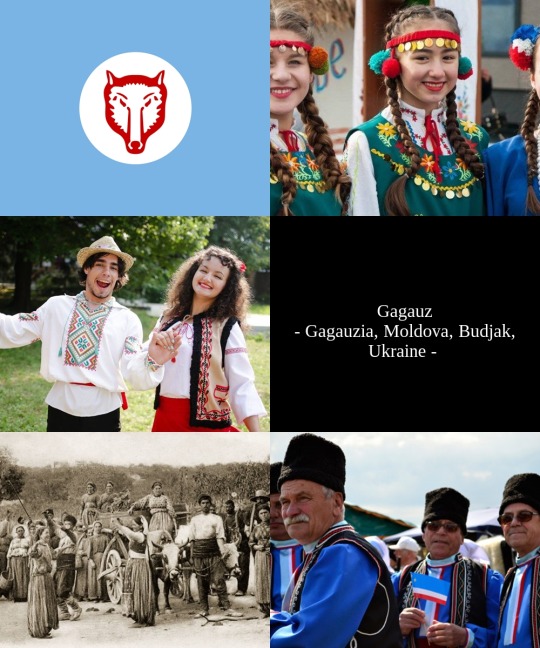



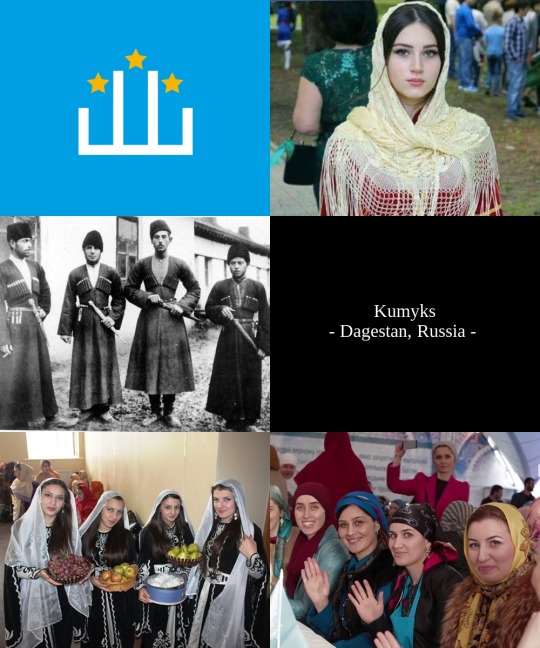
Aesthetic of the ethnies of the world ! Turkic ethnies part 1 !
The Azerbaijanis or Azeris are a Turkic people inhabitants of the country of Azerbaijan and of regions of Iran. They speak azerbaijani. They are Shia muslim. There are around 30 to 35 of them worldwide, with around 15 millions of them in Iran, 10 millions in Azerbaijan and 1 million in Russia.
The Gagauz are a Turkic people inhabitants of the region of Gagauzia in Moldova and of Budjak in Ukraine. They speak gagauz, but mainly the langage of the country they are in. They are Eastern Orthodox. There are around 300 000 of them, with 100 000 in Moldova, and 30 000 in Ukraine.
The Karachays are a Turkic people inhabitants of the region of Karachay-Cherkessia officially in Russia. They speak karachay and russian. They are Sunni muslim. There are around 225 000 of them.
The Chuvash are a Turkic people inhabitants of the region of the Republic of Chuvashia officially in Russia. They speak chuvash and russian. They are mainly irreligious and christian Orthodox. There are around 1.5 millions of them.
The Balkars are a Turkic people inhabitants of the region of Kabardino-Balkaria officially in Russia. They speak karachay-balkar and russian. They are Sunni muslim and Muwahhid muslim. There are around 130 000 of them.
The Kumyks are a Turkic people inhabitants of the region of the Kumyk Plateau in Dagestan, officially in Russia. They speak kumyk and russian. They are Sunni muslim. There are around 505 000 of them.
Those aesthetics are part of a serie. I’m covering the biggest ethnies of the world, starting by Europe. We are now covering Asian and European ethnies.
#turkic#Ethnies of the world#azerbaijan#azeri#azerbaijani#gagauz#karachay#gagauzia#karachay-cherkessia#russia#chuvash#chuvashia#balkars#kabardino-balkaria#kumyks#kumyk#dagestan#aesthetic#geography#ethnology#ethnies#world
15 notes
·
View notes
Text

Kumyks. Dsgestan. 1898
Кумыки. Дагестан. 1898
from Baye, Joseph. du Caucase
#non-russian#indigenous russian#indigenous russia#turkic#Kumyks#Кумыки#Kumyks culture#Культура Кумыки#Caucasian
2 notes
·
View notes
Photo

[TASK 244: KUMYK]
There’s a masterlist below compiled of over 30+ Kumyk faceclaims categorised by gender with their occupation and ethnicity denoted if there was a reliable source. If you want an extra challenge use a randomizer to pick a random number! Of course everything listed below are just suggestions and you can pick whichever faceclaim or whichever project you desire.
Any questions can be sent here and all tutorials have been linked below the cut for ease of access! REMEMBER to tag your resources with #TASKSWEEKLY and we will reblog them onto the main! This task can be tagged with whatever you want but if you want us to see it please be sure that our tag is the first five tags, mention us or send us a messaging linking us to your post!
THE TASK - scroll down for FC’s!
STEP 1: Decide on a FC you wish to create resources for! You can always do more than one but who are you starting with? There are links to masterlists you can use in order to find them and if you want help, just send us a message and we can pick one for you at random!
STEP 2: Pick what you want to create! You can obviously do more than one thing, but what do you want to start off with? Screencaps, RP icons, GIF packs, masterlists, PNG’s, fancasts, alternative FC’s - LITERALLY anything you desire!
STEP 3: Look back on tasks that we have created previously for tutorials on the thing you are creating unless you have whatever it is you are doing mastered - then of course feel free to just get on and do it. :)
STEP 4: Upload and tag with #TASKSWEEKLY! If you didn’t use your own screencaps/images make sure to credit where you got them from as we will not reblog packs which do not credit caps or original gifs from the original maker.
THINGS YOU CAN MAKE FOR THIS TASK
Stumped for ideas? Maybe make a masterlist or graphic of your favourite faceclaims. A masterlist of names. Plot ideas or screencaps from a music video preformed by an artist. Masterlist of quotes and lyrics that can be used for starters, thread titles or tags. Guides on culture and customs.
Screencaps
RP icons [of all sizes]
Gif Pack [maybe gif icons if you wish]
PNG packs
Manips
Dash Icons
Character Aesthetics
PSD’s
XCF’s
Graphic Templates - can be chara header, promo, border or background PSD’s!
FC Masterlists - underused, with resources, without resources!
FC Help - could be related, family templates, alternatives.
Written Guides.
and whatever else you can think of / make!
CLICK HERE FOR MASTERLIST!
6 notes
·
View notes
Text

remember i told you about #avatarsng challenge in my last post? here's another drawing for it: kumyk girl as an air mage. (kumyk person asked to draw this and she kinda liked the result so i guess it's ok) i really love their costume, it's so dainty.
kumyks are (one of) turkic people of caucasus.
28 notes
·
View notes
Text
Languages of the world
Kumyk (къумукъ тил)
Basic facts
Number of native speakers: 450,000
Official language: Dagestan (Russia)
Language of diaspora: Belarus, Kazakhstan, Latvia, Ukraine, Uzbekistan, Turkey
Script: Cyrillic, 39 letters
Grammatical cases: 6
Linguistic typology: agglutinative, SOV
Language family: Turkic, Common Turkic, Kipchak, Kipchak-Cuman
Number of dialects: 5
History
7th-10th centuries - formation of the language
13th century-1928 - Arabic script
1848 - first grammar of Kumyk
1929-1938 - shift to the Latin alphabet
1938 - adoption of Cyrillic
Writing system and pronunciation
These are the letters that make up the alphabet: а б в г гъ гь д е ё ж з и й к къ л м н нг о оь п р с т у уь ф х ц ч ш щ ъ ы ь э ю я.
ф, ц, and щ only appear in Russian loanwords.
Stress mainly falls on the last syllable.
Grammar
Nouns have two numbers (singular and plural) and six cases (nominative, possessive, dative-directive, accusative, locative, and ablative). There is no gender, but nouns can be animate or inanimate.
There are no articles, and adjectives are placed before the noun and take neither the plural nor the case markers.
Verbs are conjugated for tense, mood, aspect (perfective and imperfective), voice (active, reflexive, passive, collective, coercitive), person, and number.
Dialects
There are five dialects: Khasavyurt, Buinak, Kaitak, Tauly, and Ter. The standard language is based on the Khasavyurt and Buinak dialects.
The Kaitak dialect is distinctive in that it has no analogues.
14 notes
·
View notes
Photo

Kumyk youth holding the Kumyk flag ( Qumuqlar is the way you say Kumyks in the Kumyk language, which falls into both the Oghuz and Kipchak dialects of the Turkic languages). Kumyks used to write in Arabic script then in Latin and Cyrillic. The Kumyk people are one of the many Turkic groups whose homeland is Caucasus.
10 notes
·
View notes
Text

“Peoples of the Caucasus! Tsarist generals, landowners and capitalists by fire and sword strangled our freedom and sold out your country to foreign bankers. The Red Army of Soviet Russia vanquished your enemies; it brought you liberation from bondage and the rich. Long live the Soviet Caucasus!”
[written in five languages: Russian, Georgian, Armenian, Azerbaijani, and Kumyk]
Poster by Dmitry Moor, RSFSR, 1920
Via Socialist Art
21 notes
·
View notes